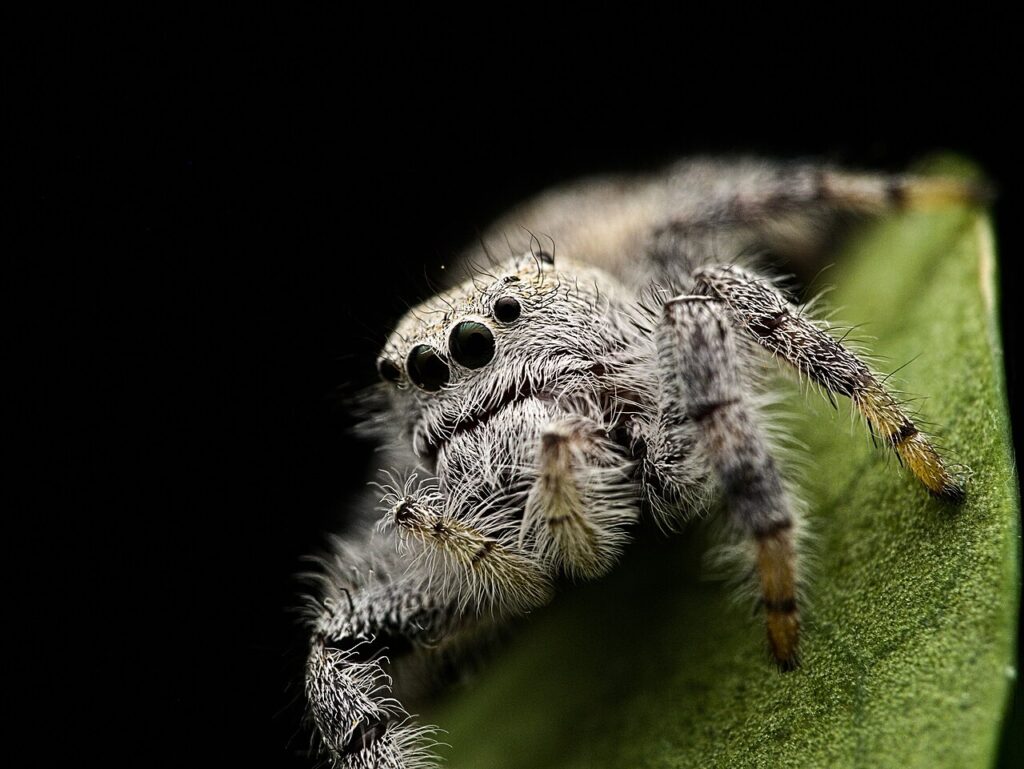
Jumping spiders, belonging to the family Salticidae, are fascinating and agile arachnids commonly found in North America. Unlike many other spider species, jumping spiders do not spin webs to catch their prey. Instead, they are skilled hunters, employing their excellent vision to track and leap onto their unsuspecting victims. This article will provide an overview of their behavior, identification tips, and effective control measures.
Identification and Appearance
Jumping spiders are typically small, ranging from 1/8 to 1 inch in length. They are often characterized by their robust bodies and large, forward-facing eyes, which contribute to their keen eyesight. Most species exhibit vibrant color patterns, commonly featuring black or brown bodies adorned with white, yellow, or red markings. The two most prevalent species in North America are the Bold Jumping Spider (Phidippus audax) and the Zebra Jumping Spider (Salticus scenicus).
Jumping Spiders Behavior and Habitat
These spiders are active during the day, preferring to hunt in sunny areas. They are known for their unique behavior of “dancing” during courtship, where males perform intricate displays to attract females. Jumping spiders are agile, capable of leaping many times their body length to capture prey or evade threats. Although they typically thrive outdoors, they may venture indoors, especially in search of warmth or food.
Feeding Habits
Jumping spiders primarily feed on insects, making them beneficial for natural pest control. They stalk their prey using a combination of stealth and speed, launching themselves from a distance. Unlike some other spider species, they do not use silk to trap their prey; instead, they rely on their hunting prowess.
Jumping Spiders Control Measures
While jumping spiders are generally harmless to humans, their presence indoors can be undesirable. Here are some effective strategies for controlling jumping spider populations:
- Remove Clutter: Clearing clutter and debris from around your home and yard can minimize hiding spots for spiders. Pay attention to piles of wood, leaves, and other organic matter.
- Seal Entry Points: Inspect your home for potential entry points, such as gaps around windows, doors, and foundation cracks. Sealing these openings can prevent spiders and other pests from entering.
- Maintain Cleanliness: Regular cleaning, including dusting and vacuuming, can help eliminate spider webs and egg sacs, reducing spider populations.
- Natural Predators: Encourage natural predators such as birds and beneficial insects that can help control spider populations in your yard.
- Professional Pest Control: If you find a significant infestation, consider contacting a professional pest control service. They can provide targeted treatments to manage jumping spiders effectively.
Conclusion
Jumping spiders are remarkable creatures that play an essential role in controlling insect populations. Understanding their behavior and implementing preventive measures can help you manage their presence in and around your home. By taking proactive steps, you can ensure a spider-free environment while appreciating the unique qualities of these intriguing arachnids.
For more information on spider control or assistance with pest issues, contact Traffic Pest Solutions today!
